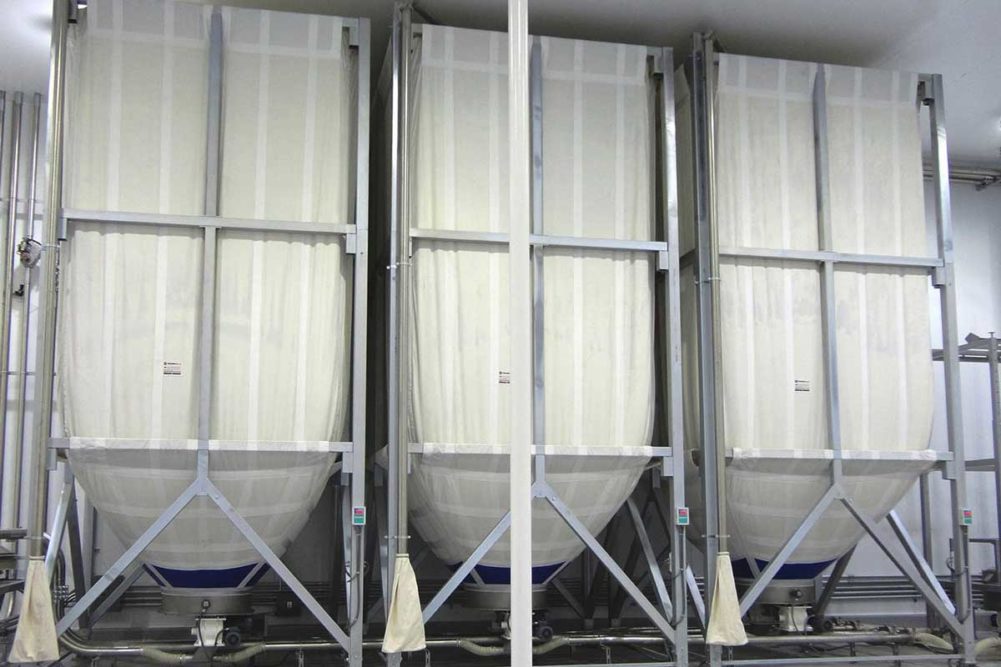Investing in a silo or two may provide the obvious, immediate ROI when it comes to expanding ingredient handling, but many bakeries may wait on automating minor and micro handling. This can be an easy place to get some more speed and accuracy as a bakery’s throughput demand grows.
Minor ingredient batching systems automate the feeding of ingredients from bins, bulk bags or totes into batching containers or directly convey them pneumatically or mechanically.
“This eliminates operator involvement entirely other than initiating single or multiple batches,” said Joe Lewis, marketing associate, Sterling Systems & Controls, Inc. “The addition of supervisory control and preventative maintenance planning software can take the entire ingredient handling and batching system to an entirely new level.”
Making space for these systems indoors can be a challenge, but there are strategies bakers can use to get the most out of their square footage. KB Systems can configure its bins to a low-profile, allowing a bakery to fit a truckload of ingredients under a low ceiling. To eliminate pallet traffic and bag lifting in the production area, Jerry Murphy, vice president, sales and marketing, Gemini Bakery Equipment/KB Systems, suggested bakers move from individual 50-lb bags to a 2,000-lb super sack system. The bakery can also incorporate day-bins or intermediate tanks for larger quantities.
If bakeries have a bulk ingredient system in place, that can also ferry minor and micro ingredients to the scale hopper above the mixer, Mr. Hunter suggested. By weighing minors and micros off the production floor such as in a warehouse area, bakers more efficiently use the space. Those pre-weighed ingredients can catch a ride with the bulk ingredients to be added ... even the ones that require small, precise weights.
“Occasionally highly functional ingredients such as enzymes are dosed directly to the mixer from the feeder and can be dosed in small quantities with high accuracy,” said John Hunter, sales account manager, bakery and ingredient handling, Bühler Group. “This can be designed with a bag tipping-station remotely located, pneumatically transferring the ingredients to a feeder located directly above the mixer.”
As bakers consider which minor ingredients to automate, Spiromatic offers a special algorithm to sort out which ones are worth automating first as a way to optimize handling efficiency.
“It’s not always or only the big volumes of ingredients that need to be considered but also the ones with the highest frequency of dosing,” said Pieter Van Hoecke, business development, North America, Spiromatic.
This article is an excerpt from the May 2020 issue of Baking & Snack. To read the entire feature on ingredient handling, click here.






